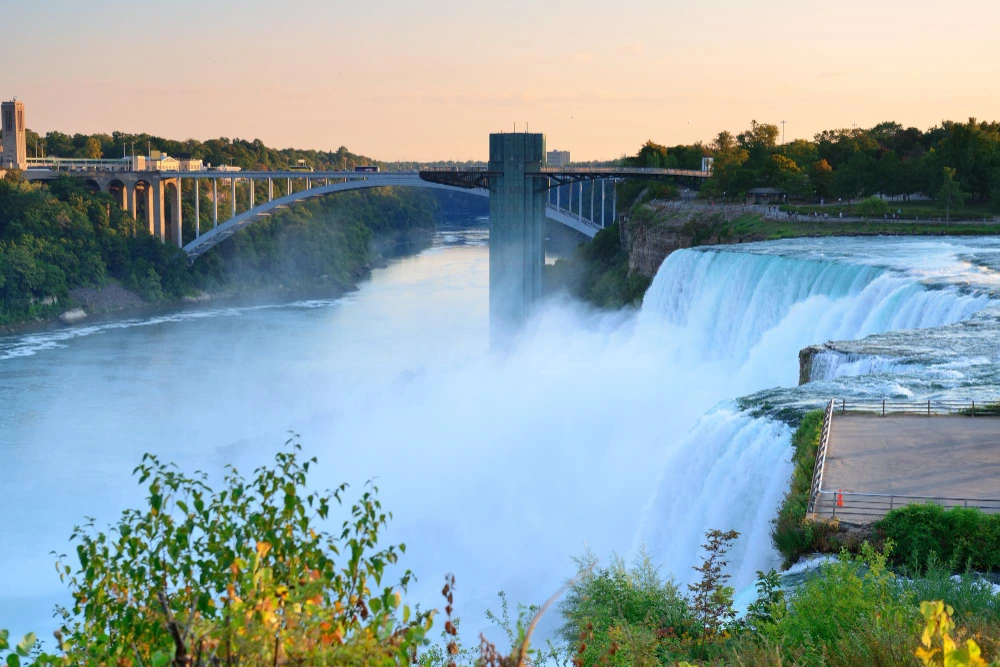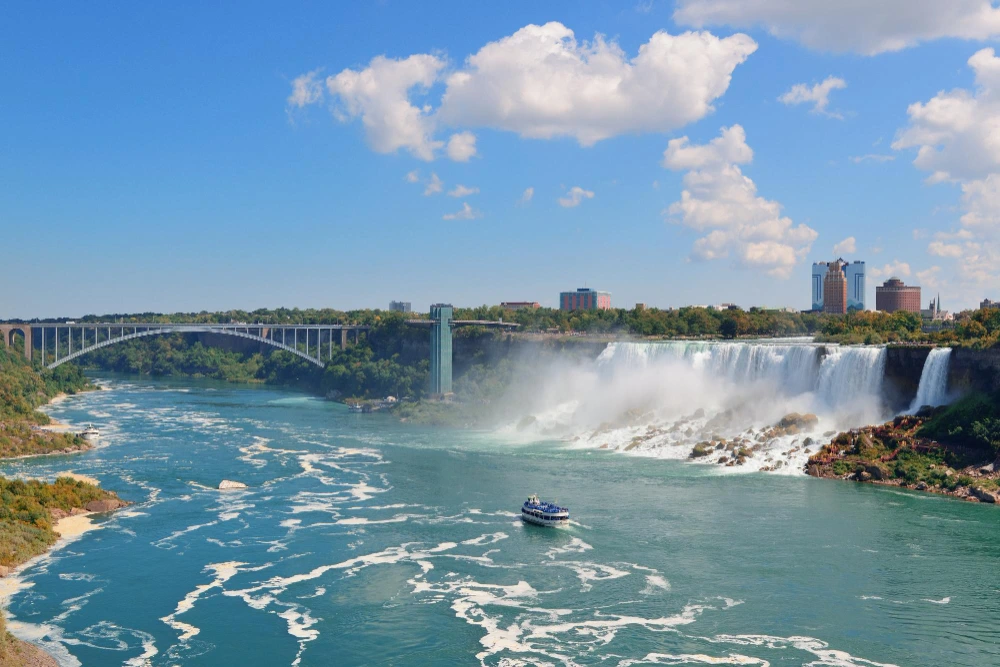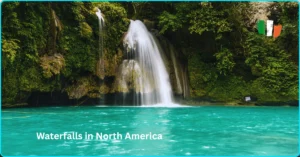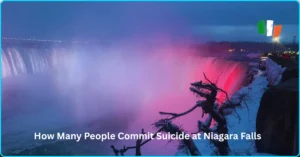Niagara Falls a breathtaking natural wonder shared between Canada and the United States often leaves visitors speechless. The roar of the water, the mist on your skin, the sheer power of nature…it feels almost magical. But behind that beauty hides a haunting truth. Over the years, this iconic site has also become known for something tragic: a place where people come to end their lives.
Understanding how many people commit suicide at Niagara Falls is about more than just numbers. It’s about real stories, heartbreak, and hope. This article takes a deeper look into the statistics, the notable incidents, and what’s being done to prevent future tragedies.
The Sobering Statistics: Understanding the Numbers
Annual Death Rates at Niagara Falls
On average, around 20 to 30 people lose their lives at Niagara Falls each year. While some are accidents people slipping while taking photos or trying to get too close others are sadly confirmed suicide attempts.
The exact number fluctuates each year, and not every case is publicly reported. Some bodies are recovered quickly, others are found much later downstream in the Niagara River, and a few are never found at all. When you ask, how many people commit suicide at Niagara Falls today, the answer isn’t always clear, as some incidents remain undetected or unreported.
Between the two countries, the Canadian side (especially near Horseshoe Falls) sees a higher number of incidents. This is due to easier access points and lower barriers in some areas.
Historical Context and Trends
Looking back decades, Niagara Falls deaths per year were often higher. Better safety measures have helped reduce accidental and intentional fatalities. Still, suicide attempts haven’t stopped.
Historically, warmer months see more activity from tourists and, unfortunately, from those seeking to end their lives. The falls remain open year-round, and the contrast of seasons often mirrors the emotional highs and lows that draw people here for very different reasons.

The Geography of Tragedy: Where Most Incidents Occur
Horseshoe Falls vs. American Falls
Most deaths occur at Horseshoe Falls on the Canadian side. It’s taller, has a stronger water current, and offers less obstructive views, which sadly also means easier access to danger zones.
The American side has more barriers and fencing, which has helped reduce incidents. Still, tragedies happen on both sides, reminding us that prevention must span across borders.
Access Points and Risk Areas
During visits, many notice that while most areas are well-guarded, certain viewing points have less supervision. A common access point is near Table Rock on the Canadian side. Some fences have been scaled before tragedy struck. In these areas, even increased patrols haven’t stopped determined individuals.
When walking along the railings, the mix of beauty and sorrow is sobering. Despite added surveillance and emergency phones, it’s clear that physical barriers alone aren’t always enough.
Notable Cases and Survival Stories
Miraculous Survivors
One of the most unbelievable survival stories is that of Roger Woodward, a 7-year-old boy who went over the falls in 1960 wearing only a life jacket. Swept into the current after a boating accident, he miraculously survived the plunge.
He wasn’t the only one. A few others have also survived the fall, though most suffer severe injuries. These stories, while rare, remind us that the human spirit can endure unimaginable events.
Daredevil Attempts vs. Tragic Incidents
In 1901, Annie Edson Taylor, a schoolteacher, made history by going over the falls in a barrel and surviving. Her barrel was specially padded. Others have tried using different devices, from a rubber ball to jet skis, to even inner tubes.
While stunts like falls in a barrel were once celebrated, today they are illegal and viewed with far more caution. The line between thrill-seeking and tragedy is razor-thin, and authorities take such attempts very seriously now.
The 1990s: A Particularly Tragic Decade
What Happened in 1995?
When people ask what happened at Niagara Falls in 1995, they’re usually referring to a string of tragic incidents. That year saw a spike in deaths, both accidental and intentional. Increased media coverage drew attention to the issue, and public discussion around mental health began growing louder.
It marked a turning point for safety protocols, encouraging stronger intervention systems and better infrastructure.
Recent Incidents and Current Trends
Fast forward to 2021, and how many people commit suicide at Niagara Falls in 2021 became a trending search after another tragic year. High-profile incidents and viral footage sparked renewed focus on mental health and safety.
Terms like Niagara Falls death yesterday and Niagara Falls death today often circulate on social media, but exact numbers are rarely confirmed immediately out of respect for the individuals and families involved.

Prevention Efforts and Safety Measures
Physical Barriers and Security
In recent years, more railings, cameras, and motion sensors have been installed. There are now designated watch zones with staff and emergency phones. If you visit the Niagara River edge or look down into the gorge, you’ll notice increased safety signs and more patrolling staff than ever before.
Still, tragedies continue. The nature of the terrain makes total prevention hard, but efforts are ongoing.
Mental Health Resources and Intervention
Crisis hotlines are posted at key points. Volunteers and local police are trained in mental health intervention. On certain days, outreach teams quietly walk the paths, ready to help anyone showing signs of distress.
This quiet watchfulness has saved lives and it continues to give people one last chance to reconsider.

The Broader Context: Mental Health and Public Spaces
Why Prominent Locations Attract Tragic Incidents
There’s something symbolic about Niagara Falls. Its overwhelming power mirrors emotional despair. Experts say people often choose visible, public landmarks in moments of extreme distress not for attention, but for the finality and symbolism they represent.
This ties into the broader suicide rate in Niagara, which local authorities continue to monitor alongside national data.
The Role of Media Coverage
Online forums like Reddit often discuss Niagara Falls tragedies. While some threads provide useful information and support, others sensationalize incidents.
Responsible media coverage can help raise awareness without glamorizing death. It’s a fine line, but one worth walking carefully.
Personal Reflections: A Visitor’s Perspective
Standing at the edge of the falls, there’s a strange duality the peaceful power of nature mixed with invisible sorrow. One moment, you’re taking selfies with family. The next, you notice a plaque or bouquet in memory of someone lost.
It changes you. It makes you realize how quickly moments can shift. And it leaves you wondering how many people have died at Niagara Falls, and more importantly, how many could’ve been saved.
Resources and Support
Mental Health Resources
If you or someone you know is struggling, these resources can help:
- Canada: Talk Suicide Canada – 1-833-456-4566
- USA: National Suicide Prevention Lifeline – 1-800-273-TALK (8255)
- International: Befrienders.org
If You’re Struggling
Please know you’re not alone. The feelings may seem too heavy now, but there is help. There are people who want to listen, who care, and who understand. It’s okay to ask for support it could change everything.
Conclusion
Niagara Falls will always be a place of wonder and, sadly, a place of sorrow for many. Understanding how many people commit suicide at Niagara Falls opens the door to deeper conversations about mental health, public safety, and compassion.
Let’s keep those conversations going. Because behind every number is a human life and every life matters.
Frequently Asked Questions
How many people commit suicide at Niagara Falls today?
There’s no official daily count, but incidents still occur, often without media coverage.
What is the suicide rate in Niagara?
Niagara region authorities don’t release exact numbers, but it remains a serious concern requiring continued attention.
How many people have died at Niagara Falls total?
Estimates range from 5,000 to over 6,000 deaths since the 1800s, including accidents and confirmed suicides.
Who was the last person to go over Niagara Falls?
Due to privacy, names aren’t always released. In recent years, incidents have been reported but not all are confirmed or publicized.
How many people have tried to go down Niagara Falls?
Over 20 known daredevils have attempted the plunge. Only a few survived, and all were either arrested or fined afterward.










